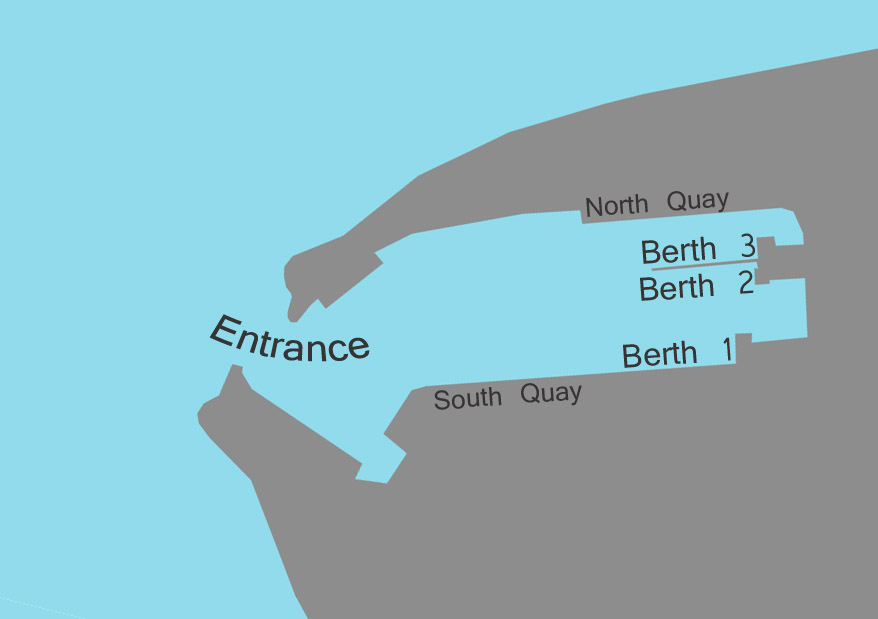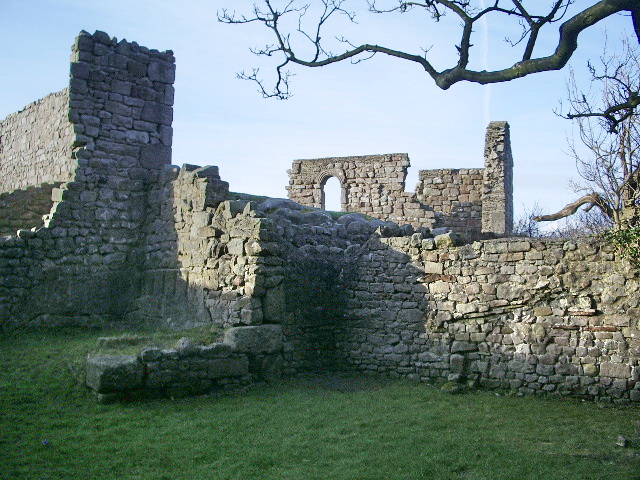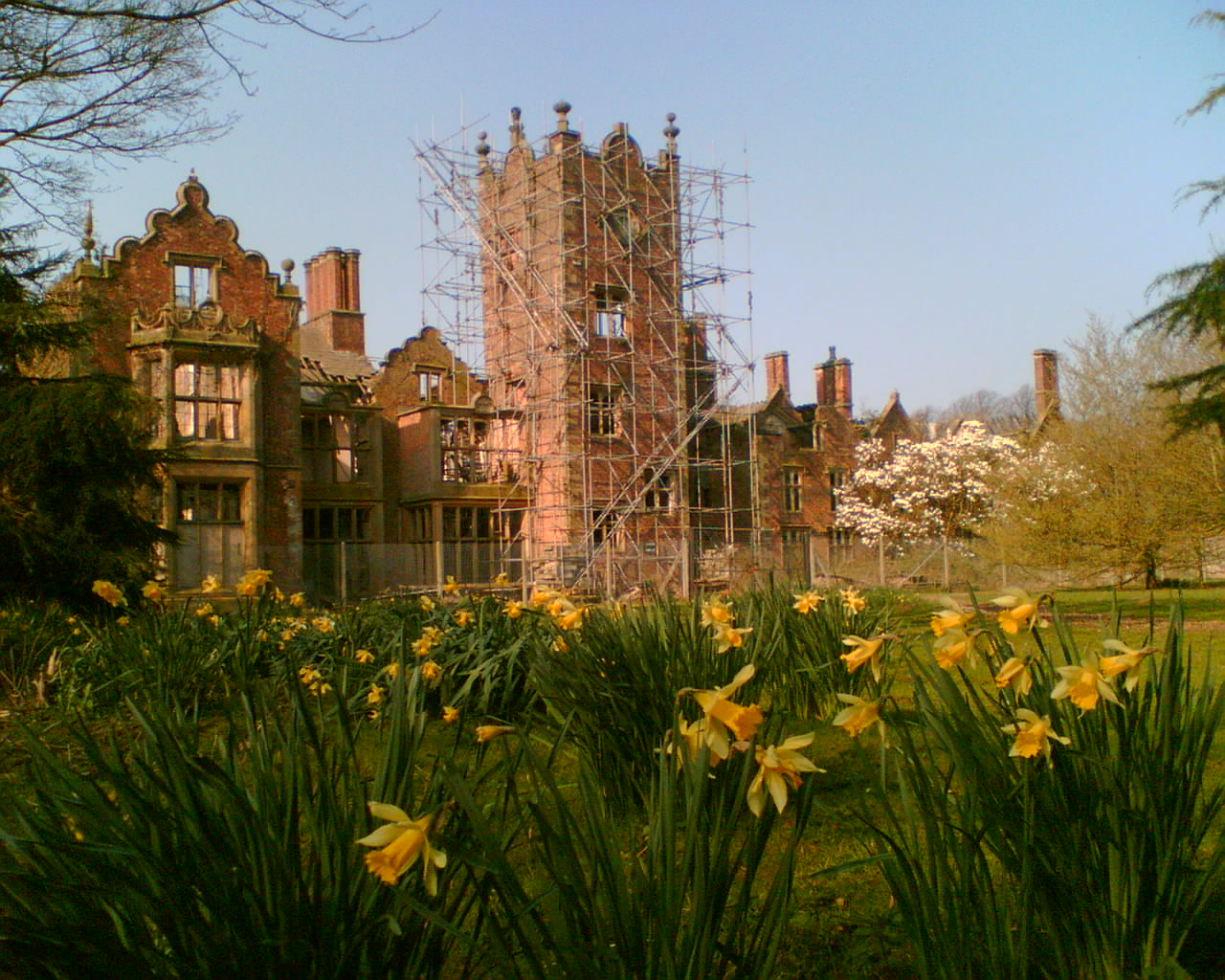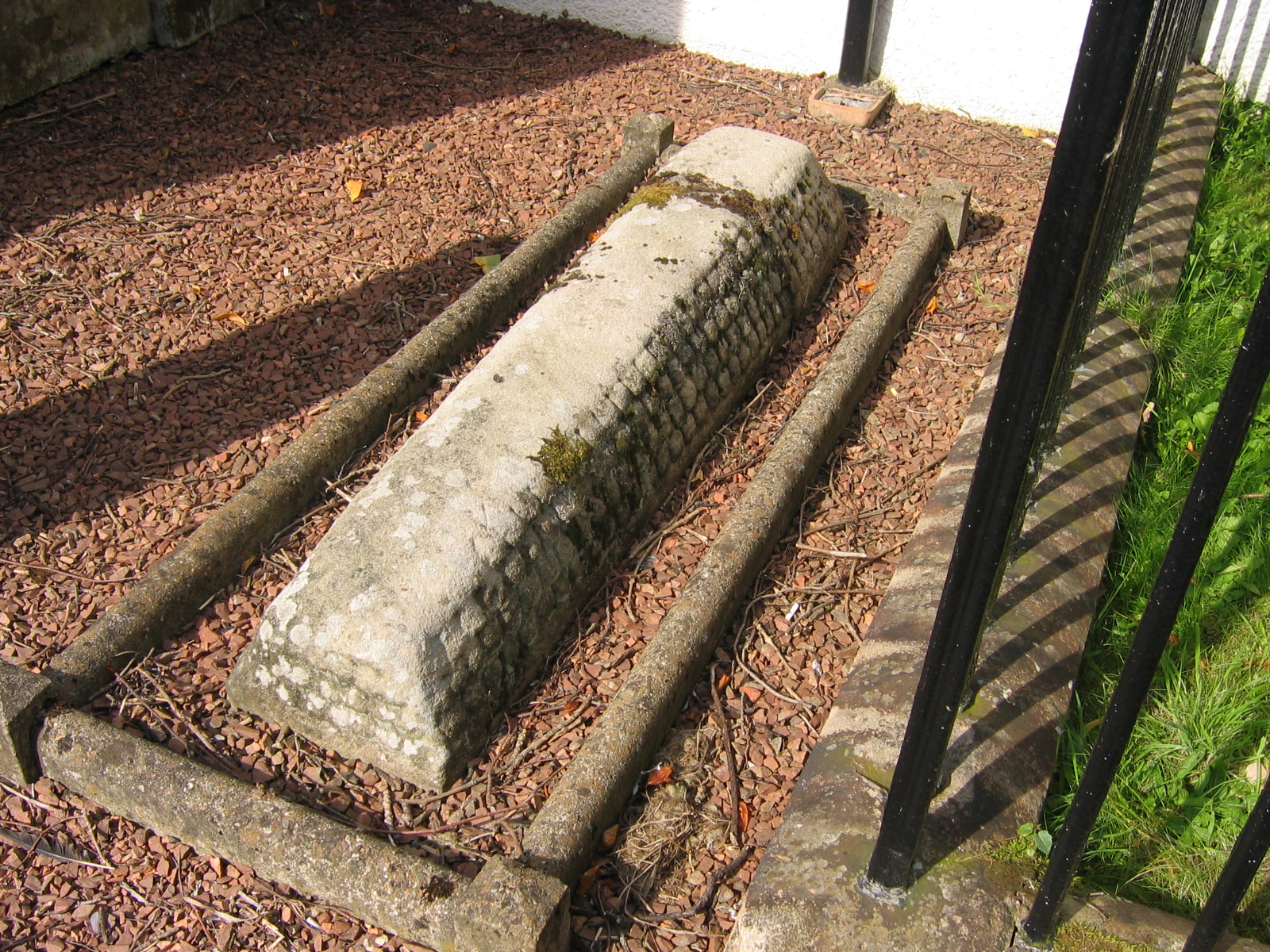|
Heysham
Heysham ( ) is a coastal town in Lancashire, England, overlooking Morecambe Bay. It is a Heysham Port, ferry port, with services to the Isle of Man and Ireland, and the site of two Heysham nuclear power station, nuclear power stations. Demography Administratively, Heysham is part of the City of Lancaster, Lancaster city district, with three wards: Heysham Central (with a population of 4,397, increasing to 4,478 at the 2011 Census), Heysham North (5,477 decreasing to 5,274 at the 2011 Census) and Heysham South (6,262; increasing to 7,264 at the 2011 Census). Together they had a population of 16,136 (2001 census), and 17,016 (2011 census). These include areas beyond the village of Heysham itself, which has a population of about 6,500. History Of historical interest are the stone-hewn graves in the ruins of the ancient St Patrick's Chapel, Heysham, St. Patrick's Chapel, close to St Peter's Church, Heysham, St Peter's Church. They are thought to date from the 11th century, and are ... [...More Info...] [...Related Items...] OR: [Wikipedia] [Google] [Baidu] |
Heysham Nuclear Power Station
Heysham nuclear power station is operated by EDF Energy in Heysham, Lancashire, England. The site is divided into two separately-managed nuclear power stations, Heysham 1 and Heysham 2, both with two reactors of the advanced gas-cooled reactor (AGR) type. In 2010, the British government announced that Heysham was one of the eight sites it considered suitable for future nuclear power stations. On 1 August 2016, Heysham 2's Unit 8 broke the world record for longest continuous operation of a nuclear generator without a shutdown. This record-breaking run exceeds the previous record of 894days set by Pickering Nuclear Generating Station's Unit 7 (Lake Ontario, Canada) in 1994. The reactor has generated 13.5TWh of electricity so far during this continuous operation, taking its lifetime generation to 115.46TWh. Heysham 1 Construction of Heysham 1, which was undertaken by British Nuclear Design & Construction (BNDC), a consortium backed of English Electric, Babcock & Wilcox and Tayl ... [...More Info...] [...Related Items...] OR: [Wikipedia] [Google] [Baidu] |
Heysham Port
Heysham Port is the port of Heysham, Lancashire, England. It is served by Heysham Port railway station. History In 1891, the Midland Railway gave notice of its intention to develop a harbour at Heysham and appointed consulting engineers James Abernethy and his son to undertake a feasibility study of the project. The plan was for an enclosed dock accessed through a lock, this idea made no further progress. In 1895, a much larger Heysham port plan was put forward by Messrs James Abernethy & Son, in conjunction with the Midland Railway's chief engineer. This formed the basis of the harbour which was built, although there were many changes as work progressed and the full scheme was never completed. In 1896, an enabling Act of Parliament was obtained for the construction of the harbour and the contract for construction was let in July 1897. The project cost about £3 million. The first ship to dock at Heysham was the ''Antrim'', one of the ships that the Midland Railway had ordered f ... [...More Info...] [...Related Items...] OR: [Wikipedia] [Google] [Baidu] |
St Peter's Church, Heysham
St Peter's Church is in the village of Heysham, Lancashire, England. It is recorded in the National Heritage List for England as a designated Grade I listed building. It is an active Anglican parish church in the deanery of Lancaster, the archdeaconry of Lancaster and the diocese of Blackburn. History It is believed that a church was founded on this site in the 7th or 8th century. In 1080 it was recorded that the location was the site of an old Anglo-Saxon church. Some of the fabric of that church remains in the present church. The chancel was built around 1340–50 and the south aisle was added in the 15th century. The north aisle was added in 1864 and other extensions and restorations were carried out by the Lancaster architect E. G. Paley. At that time an Anglo-Saxon doorway was moved and rebuilt in the churchyard, and two galleries which had served as private pews with their own entrances were taken down. Architecture The church is buil ... [...More Info...] [...Related Items...] OR: [Wikipedia] [Google] [Baidu] |
Lancashire
Lancashire ( , ; abbreviated Lancs) is the name of a historic county, ceremonial county, and non-metropolitan county in North West England. The boundaries of these three areas differ significantly. The non-metropolitan county of Lancashire was created by the Local Government Act 1972. It is administered by Lancashire County Council, based in Preston, and twelve district councils. Although Lancaster is still considered the county town, Preston is the administrative centre of the non-metropolitan county. The ceremonial county has the same boundaries except that it also includes Blackpool and Blackburn with Darwen, which are unitary authorities. The historic county of Lancashire is larger and includes the cities of Manchester and Liverpool as well as the Furness and Cartmel peninsulas, but excludes Bowland area of the West Riding of Yorkshire transferred to the non-metropolitan county in 1974 History Before the county During Roman times the area was part of the Bri ... [...More Info...] [...Related Items...] OR: [Wikipedia] [Google] [Baidu] |
Morecambe And Lunesdale (UK Parliament Constituency)
Morecambe and Lunesdale is a constituency represented in the House of Commons of the UK Parliament since 2010 by David Morris, a Conservative. Constituency profile Since 1979 the constituency has been a bellwether and includes the seaside town and many villages as well as the north bank of the City of Lancaster, which is largely Skerton. This seat brings together northern semi-rural reaches of Lancashire bisected by the M6, including seaside Silverdale and Carnforth south of the Cumbria border, the seaside resort of Morecambe and the nuclear power station/ferry port village of Heysham which provides a direct east–west service to Warrenpoint, Northern Ireland. Separating Morecambe from Lancaster is a narrow belt of parkland, houses and the White Lund industrial estate. Boundaries Before 1950, Morecambe was in the Lancaster constituency. This seat was formerly Morecambe and Lonsdale and gained a new name and redrawn boundaries in 1983. For the General Electio ... [...More Info...] [...Related Items...] OR: [Wikipedia] [Google] [Baidu] |
St Patrick's Chapel, Heysham
St Patrick's Chapel is a ruined building that stands on a headland above St Peter's Church, in Heysham, Lancashire, England (). It is recorded in the National Heritage List for England as a designated Grade I listed building, and is a Scheduled Ancient Monument. Description The ruin dates from the 8th or 9th century, and is built of sandstone rubble. The plan is a plain slightly tapering rectangle measuring by . Consolidation work was carried out in 1903 using stone tiles. Most of the south wall, the east gable wall, and the east part of the north wall are still present. The south wall contains a doorway with long-and-short jambs and an arch with concentric grooves. Near the chapel is a group of six rock-cut tombs and a separate group of two rock-cut tombs. Each group is listed at Grade I, and each tomb has an associated socket probably intended for a timber cross. Archaeology In 1977 an excavation took place in and to the south of the chapel, which dated ... [...More Info...] [...Related Items...] OR: [Wikipedia] [Google] [Baidu] |
City Of Lancaster
The City of Lancaster () is a local government district of Lancashire, England, with the status of a city and non-metropolitan district. It is named after its largest settlement, Lancaster, but covers a far larger area, which includes the towns of Morecambe, Heysham, and Carnforth, as well as outlying villages, farms, rural hinterland and (since 1 August 2016) a section of the Yorkshire Dales National Park. The district has a population of (), and an area of . History The current city boundaries were set as part of the provisions of the Local Government Act 1972, which created a non-metropolitan district on 1 April 1974 covering the territory of five former districts, which were abolished at the same time: *Carnforth Urban District * Lancaster Municipal Borough *Lancaster Rural District * Lunesdale Rural District * Morecambe and Heysham Municipal Borough The city status which had been held by the old municipal borough of Lancaster since 1937 was transferred to the non-metrop ... [...More Info...] [...Related Items...] OR: [Wikipedia] [Google] [Baidu] |
Morecambe Bay
Morecambe Bay is a large estuary in northwest England, just to the south of the Lake District National Park. It is the largest expanse of intertidal mudflats and sand in the United Kingdom, covering a total area of . In 1974, the second largest gas field in the UK was discovered west of Blackpool, with original reserves of over 7 trillion cubic feet (tcf) (200 billion cubic metres). At its peak, 15% of Britain's gas supply came from the bay but production is now in decline. It is also one of the homes of the high brown fritillary butterfly. Natural features The rivers Leven, Kent, Keer, Lune and Wyre drain into the Bay, with their various estuaries making a number of peninsulas within the bay. Much of the land around the bay is reclaimed, forming salt marshes used in agriculture. Morecambe Bay is also an important wildlife site, with abundant birdlife and varied marine habitats, and there is a bird observatory at Walney Island. The bay has rich cockle beds, which have been ... [...More Info...] [...Related Items...] OR: [Wikipedia] [Google] [Baidu] |
Heritage Trust For The North West
Heritage Trust for the North West / Heritage Trust North West is a registered Building Preservation and Conservation Trusts in the UK, Building Preservation Trust, established in 1978 as a charity and company. Formerly known as the ''Lancashire Heritage Trust'', it has rescued and restored many buildings of architectural interest at risk in Lancashire. In 1996 Lancashire Heritage Trust merged with the ''North West Buildings Preservation Trust'' which had similar aims and enlarged its remit to cover the North West of England, a requirement of the Charity Commission. Subsequently, the trust has developed projects in Manchester, Liverpool and Cumbria. The aim of the trust is to restore and find new and appropriate uses for historic buildings and encourage good design and craftsmanship. It has retained some of the buildings it has restored to provide funding for further projects. Others are open to the public forming a network of historic places. Up to October 2006 the trust's head ... [...More Info...] [...Related Items...] OR: [Wikipedia] [Google] [Baidu] |
The Best Of Black Sabbath
''The Best of Black Sabbath'' is a double CD compilation album by Black Sabbath released in 2000 on the Sanctuary Records label. Its 32 songs are presented chronologically from the band's first 11 albums, spanning the years 1970 to 1983. Black Sabbath's classic six-album run, from 1970s debut ''Black Sabbath'' through 1975's ''Sabotage'' is celebrated with three to six songs from each album. Original vocalist Ozzy Osbourne's subsequent final two albums with the band, 1976's ''Technical Ecstasy'' and 1978's ''Never Say Die!'', are represented by one and two songs, respectively. Replacement Ronnie James Dio's early 80's stint fronting the band on two albums is acknowledged with the title track of 1980's '' Heaven and Hell'' and a track from 1981's '' The Mob Rules''. The compilation closes with a song from 1983's attempted rebirth, ''Born Again'', former Deep Purple vocalist Ian Gillan's sole album with the band. ''The Best of Black Sabbath'' does not include any later material ... [...More Info...] [...Related Items...] OR: [Wikipedia] [Google] [Baidu] |
Saint Patrick
Saint Patrick ( la, Patricius; ga, Pádraig ; cy, Padrig) was a fifth-century Romano-British Christian missionary and bishop in Ireland. Known as the "Apostle of Ireland", he is the primary patron saint of Ireland, the other patron saints being Brigit of Kildare and Columba. Patrick was never formally canonised, having lived prior to the current laws of the Catholic Church in these matters. Nevertheless, he is venerated as a Saint in the Catholic Church and in the Eastern Orthodox Church, where he is regarded as equal-to-the-apostles and Enlightener of Ireland. The dates of Patrick's life cannot be fixed with certainty, but there is general agreement that he was active as a missionary in Ireland during the fifth century. A recent biography on Patrick shows a late fourth-century date for the saint is not impossible. Early medieval tradition credits him with being the first bishop of Armagh and Primate of Ireland, and regards him as the founder of Christianity in Ireland, con ... [...More Info...] [...Related Items...] OR: [Wikipedia] [Google] [Baidu] |
Hogback (sculpture)
Hogbacks are stone carved Anglo-Scandinavian sculptures from 10th- to 12th-century England and Scotland. Singular hogbacks were found in Ireland and Wales. Hogbacks fell out of fashion by the beginning of the 11th century. Their function is generally accepted as grave markers. Similar grave markers have been found in Scandinavia. In Cornwall similar stones are known as ''coped stones''. Geography and description Hogbacks take the form of recumbent monuments, generally with a curved ('hogbacked') ridge, often also with outwardly curved sides. This shape, and the fact that they are frequently decorated with ' shingles' on either side of the central ridge, show that they are stylised 'houses' for the dead. The 'house' is of a Scandinavian longhouse type associated with the 'mead hall' feasting at Valhalla in pre-Christian Norse religion. One theory is that hogbacks originated among the Danish settlers who emigrated to northern England in the 870s. However, there is not sufficient re ... [...More Info...] [...Related Items...] OR: [Wikipedia] [Google] [Baidu] |




.jpg)



